When I’m teaching the American Revolution, I jump out of bed everyday, and (after coffee), I can’t wait to get into my classroom. Teaching this pivotal time right at the dawn of the United States is more than exciting… it’s exhilarating!
As you may have gathered from many of my other posts, I believe it’s an honor to teach social studies, especially to 5th graders. My classroom is often the very first place students hear about the founding of our nation and the documents that give life and structure to our system of government.
This post may be a bit long, but it’s full of good tips and information. If you stick with me to the end, I have a special freebie that you and your students will enjoy!
So, how do I teach the American Revolution to my 5th graders? The simple answer: It’s a process.
I break this period into two units. First, we study the Road to Revolution, which includes the events leading to the Revolution. Then, we study the American Revolution.
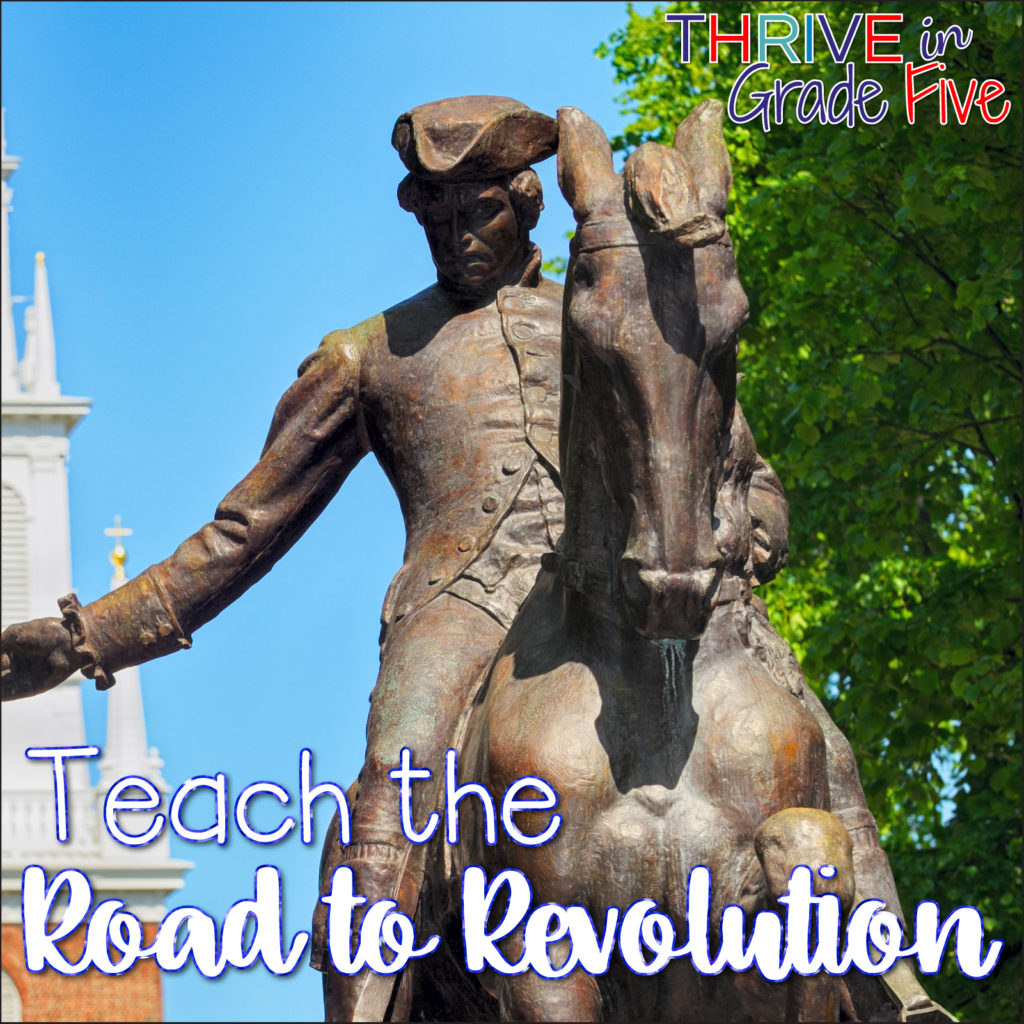
After a thorough study of Colonial America, we dive into what I refer to as the Road to Revolution.
It’s helpful to compare the Road to Revolution to a person continually adding pressure to an unsteady table. Eventually that table is going to collapse.
England kept adding more and more stress to the colonies until the Second Continental Congress decided they’d had enough! Along the road, there were a number of events, injustices, and provocations that led the colonies to declare independence.
To deepen understanding, students keep track of the events leading to the American Revolution. I put up this road template on my classroom wall and I add the events as we study them.
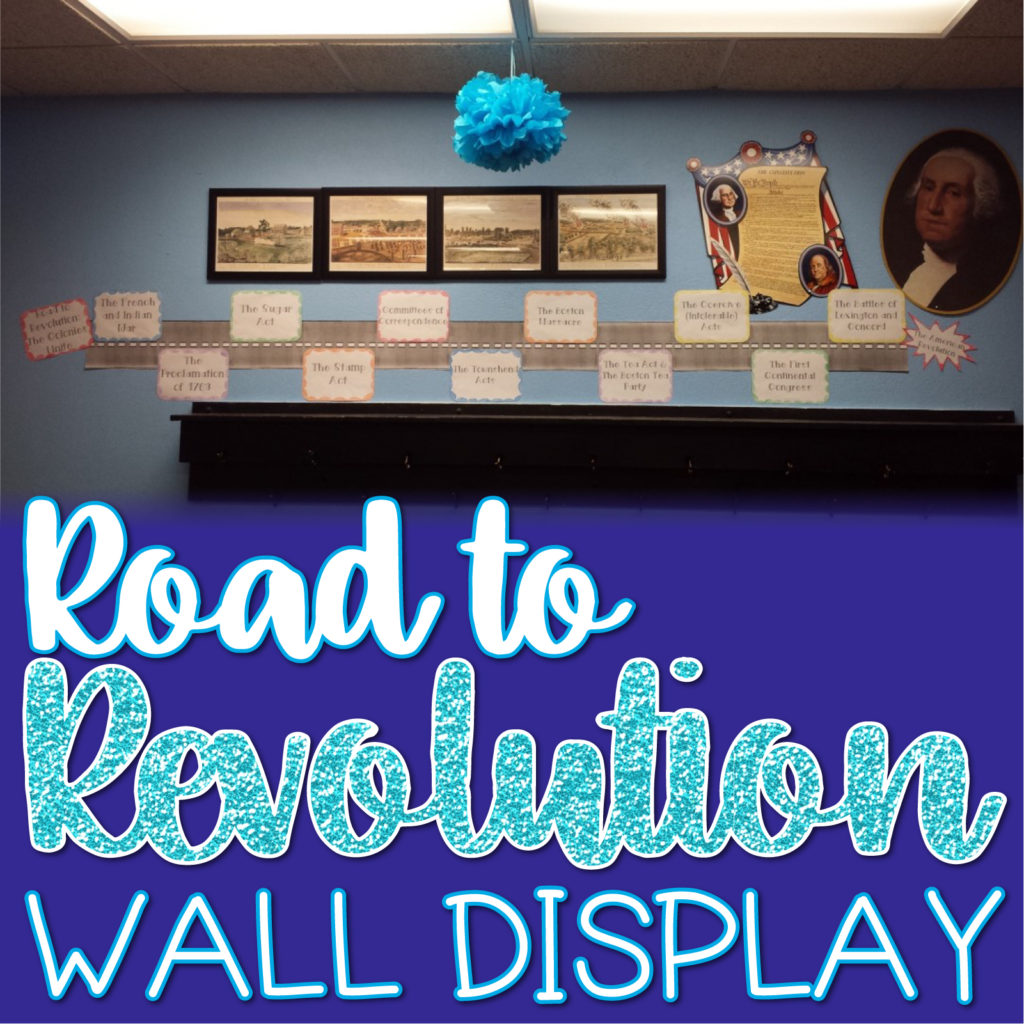
We study the events on the Road to Revolution in a chronological order. Please see the chart below:
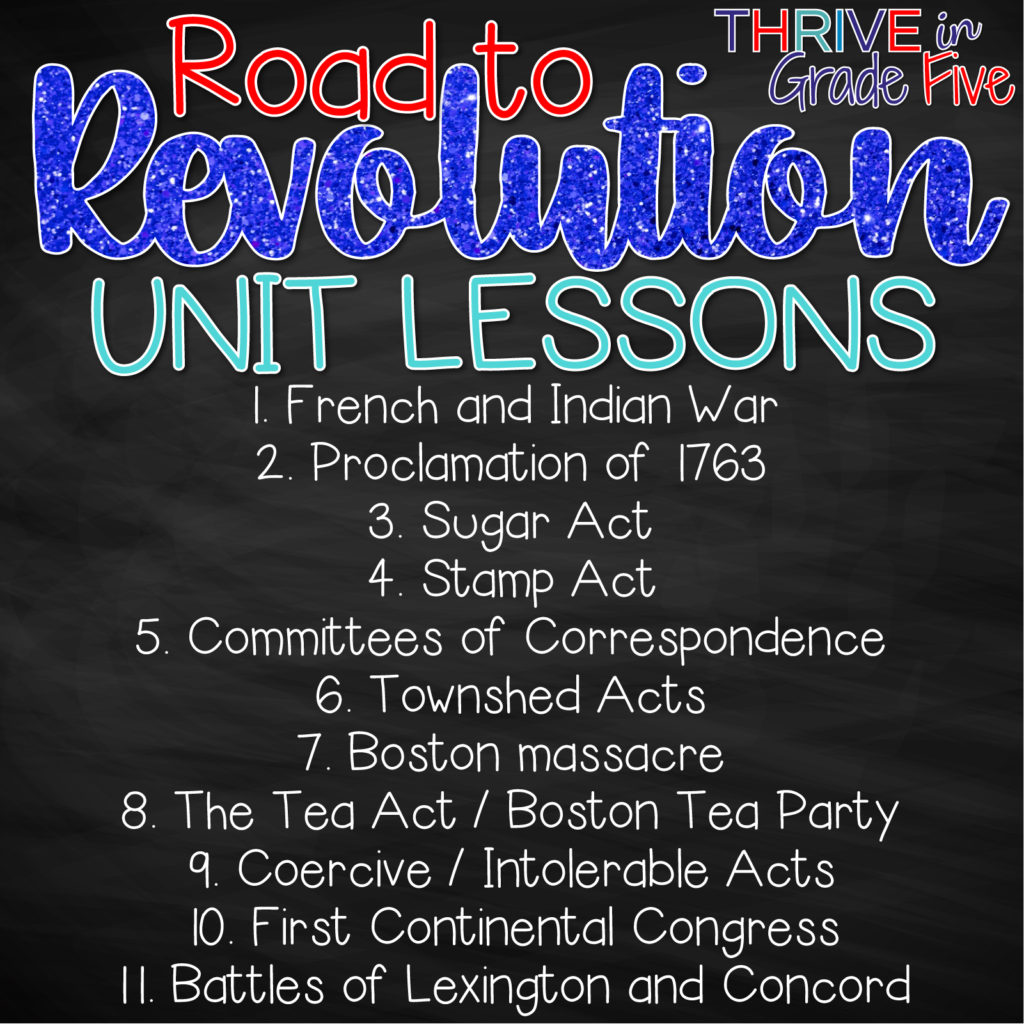
For your convenience, I’ve listed out my process for teaching the lessons in this unit.
Step 1
I introduce each lesson with a story. This serves two purposes. First, interesting stories spark students’ interest in the topic. Second, stories help preview the information students are expected to learn.
If you need help learning how to tell stories in social studies class, I wrote this blog post just for you: The Importance of Telling Stories in Social Studies Class
Step 2
Next, we read an informational passage about the event or topic. I find that it’s best to restrict content reading to one page at a time, or maybe two pages, if it’s an extensive topic.
Example of an informational page:
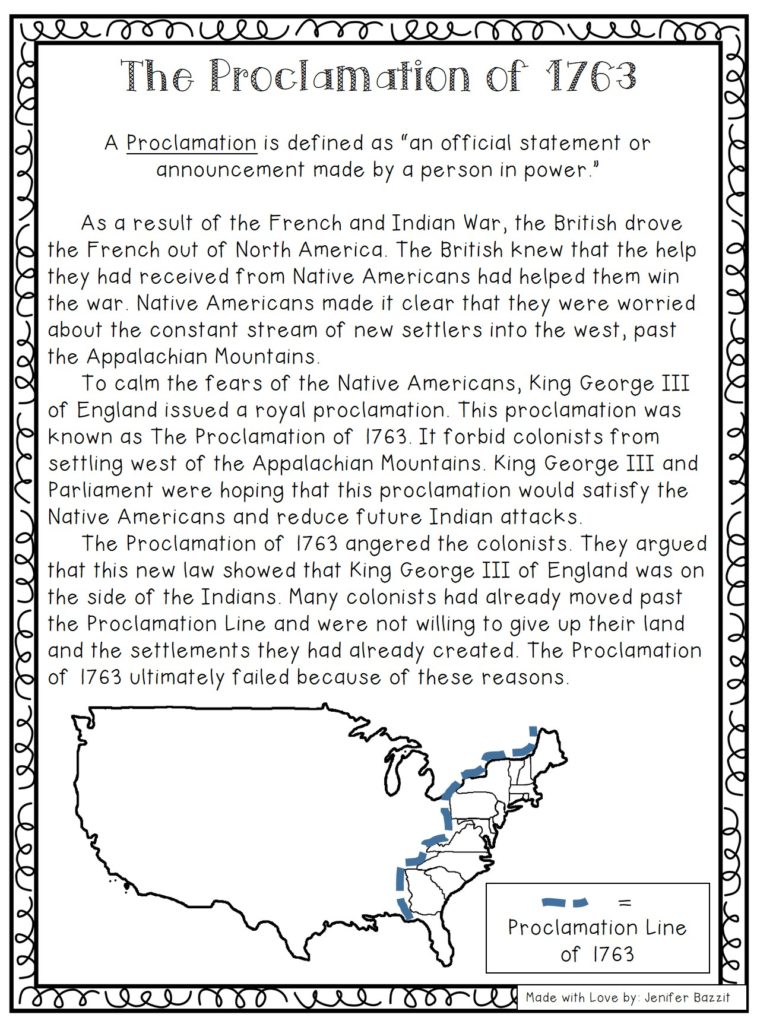
Step 3
Students discuss the information they just learned. This happens in many formats in my classroom because I like to change things up frequently. To have students verbalize what they just learned, I like to encourage round-table discussion and partner talk.
There’s no “sit and get” in my classroom. Students learn and retain so much more when they TALK to other kids about new information.
Step 4
Students complete a hands-on activity, like an interactive notebook foldable page or a group activity, using their informational passages.
Example of an interactive notebook foldable activity:
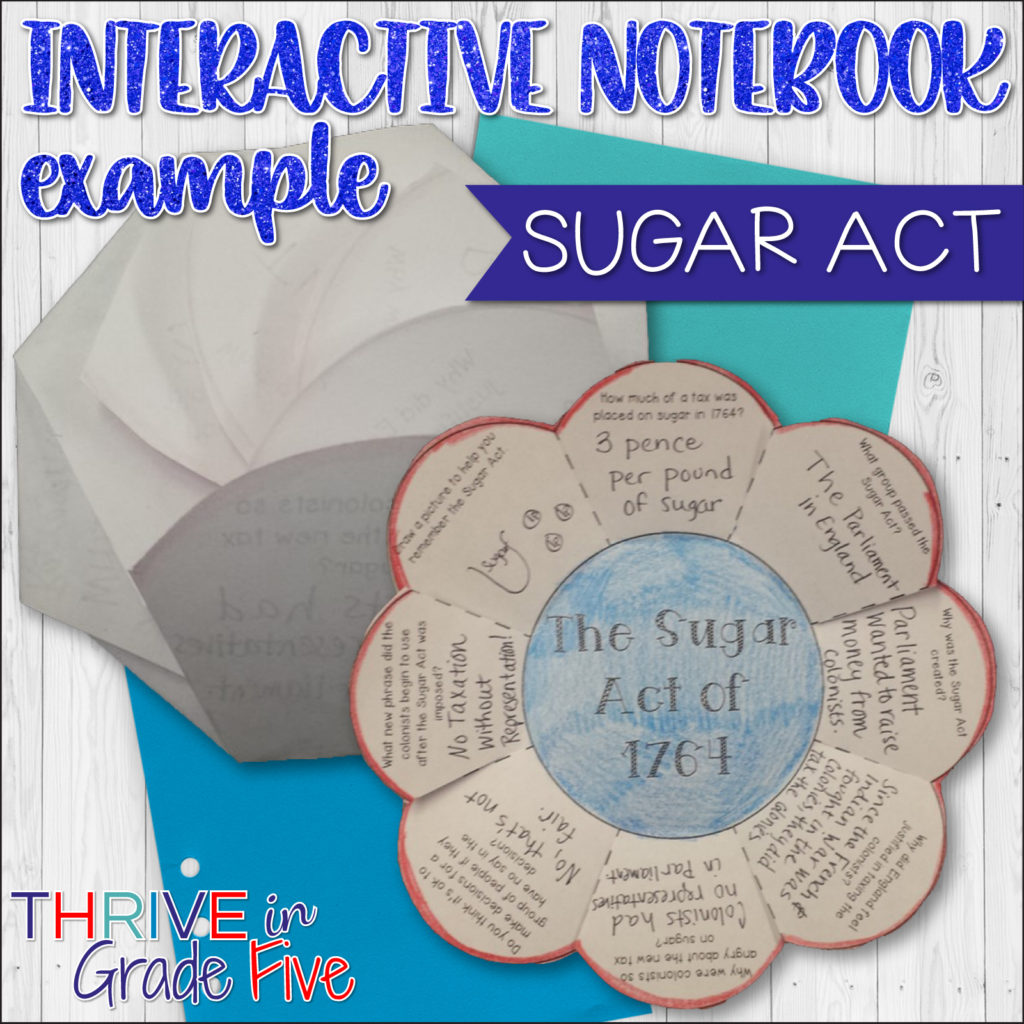
By the time students complete this step, they are solid on the new information they’ve learned.
Step 5 (Most of the time)
In most of my lessons, I include a primary source study. Primary sources truly help bring the American Revolution to life.
Example of a primary source page that I use:
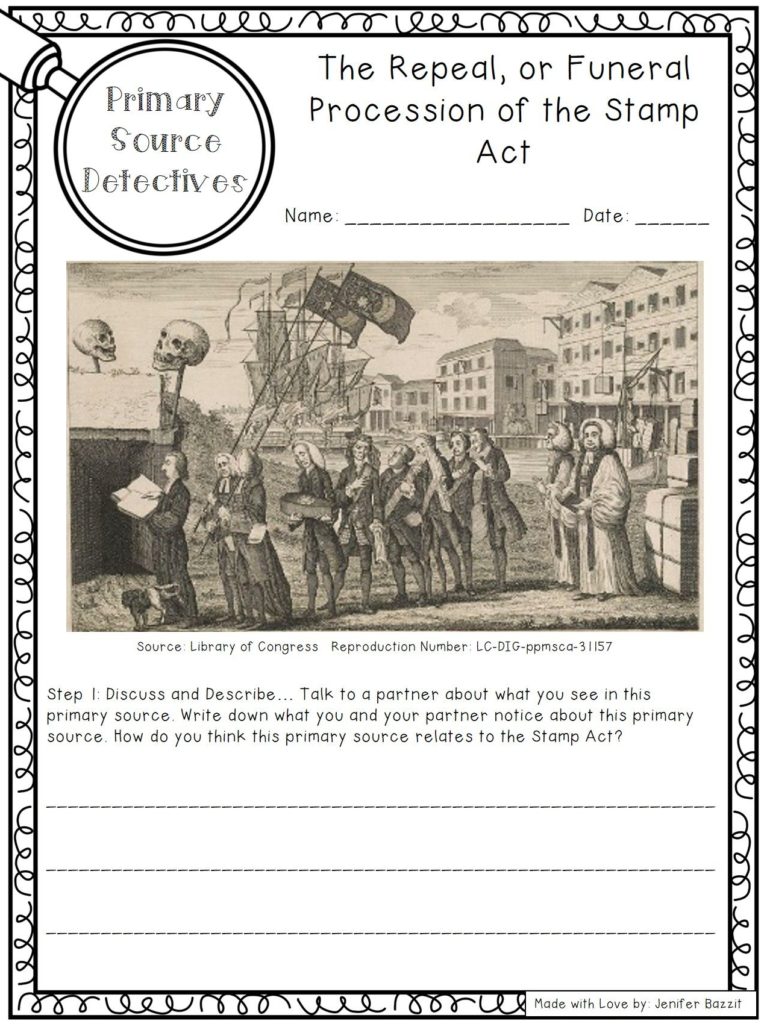
If you need more guidance with using primary sources in the classroom, please see this post: Teaching with Primary Sources in Upper Elementary.
Step 6 (Sometimes)
Children’s literature books are a goldmine for social studies teachers. When you find books that are relevant to the time period you are studying, USE THEM! Students love being read to and are likely to remember stories from books much more than what you say.
My favorite book to use during the Road to Revolution:
* Please note that Thrive in Grade Five (Jenifer Bazzit) is a participant in the Amazon Services LLC Associates Program, an affiliate advertising program designed to provide a means for sites to earn advertising fees by advertising and linking to amazon.com. *
This book contains poems from the perspectives of various colonial individuals giving their opinions about the Boston Tea Party. **Hint: Studying events from multiple perspectives is a social studies skill AND a language arts skill!**
If you are looking for more books to read in social studies class, I have a post just for you: My Favorite Read-Aloud Books for Upper Elementary Social Studies.
Step 7
Review daily! Trust me… I know this seems like overkill. But do a quick review of the events you’ve learned about so far. There is so much to the American Revolution and students need their memories refreshed frequently to keep it all straight.
End of the Road to Revolution
There’s a special surprise at the end of this road! The American Revolution begins and class becomes even more exciting.
Once we reach the end of the Road to Revolution, we review and take a unit test. I am always so very excited to grade my students’ tests and find out how much they learned.
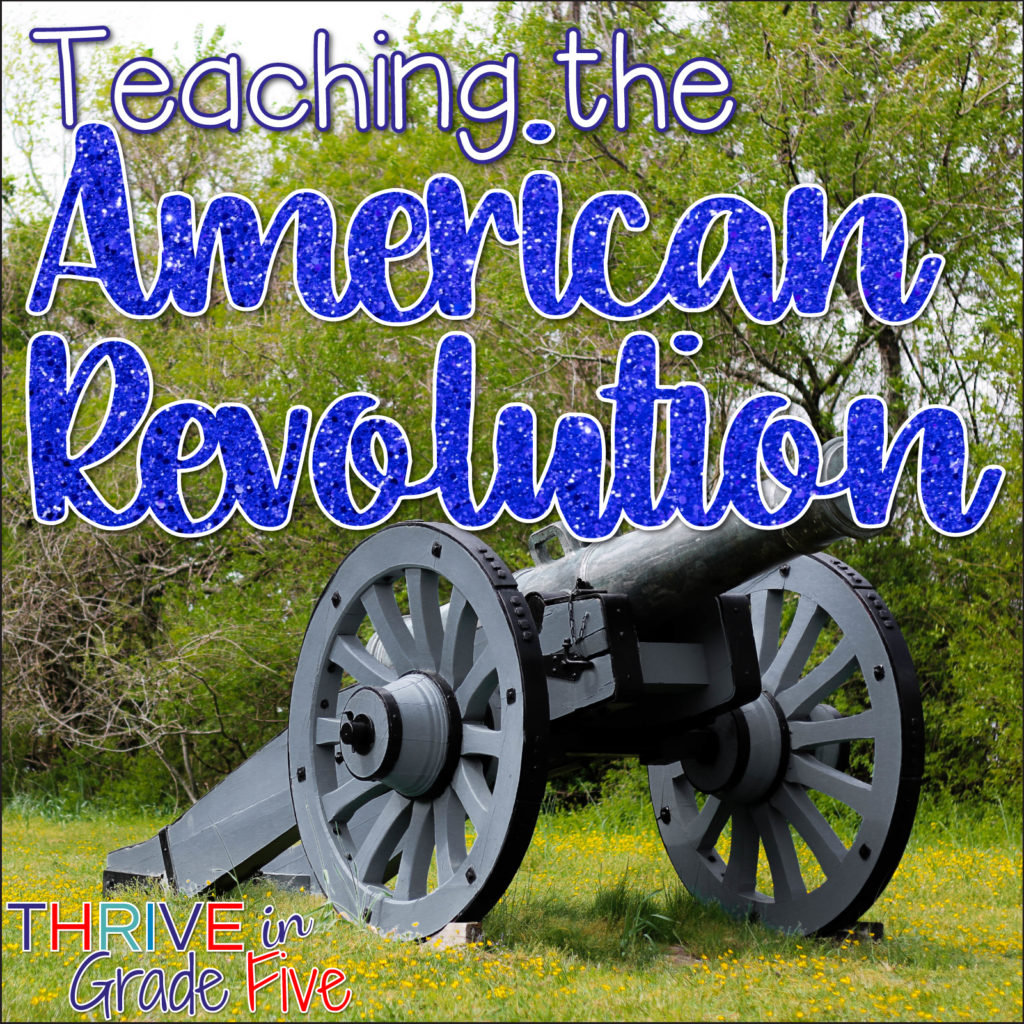
Once the American Revolution was sparked, there was no stopping the desire for independence.
Although the colonies were now at war, students need to understand that not everyone in the American colonies was a patriot.
There were many staunch loyalists and many people who just really didn’t care either way.
Just like the Road to Revolution, we work through the events one by one.
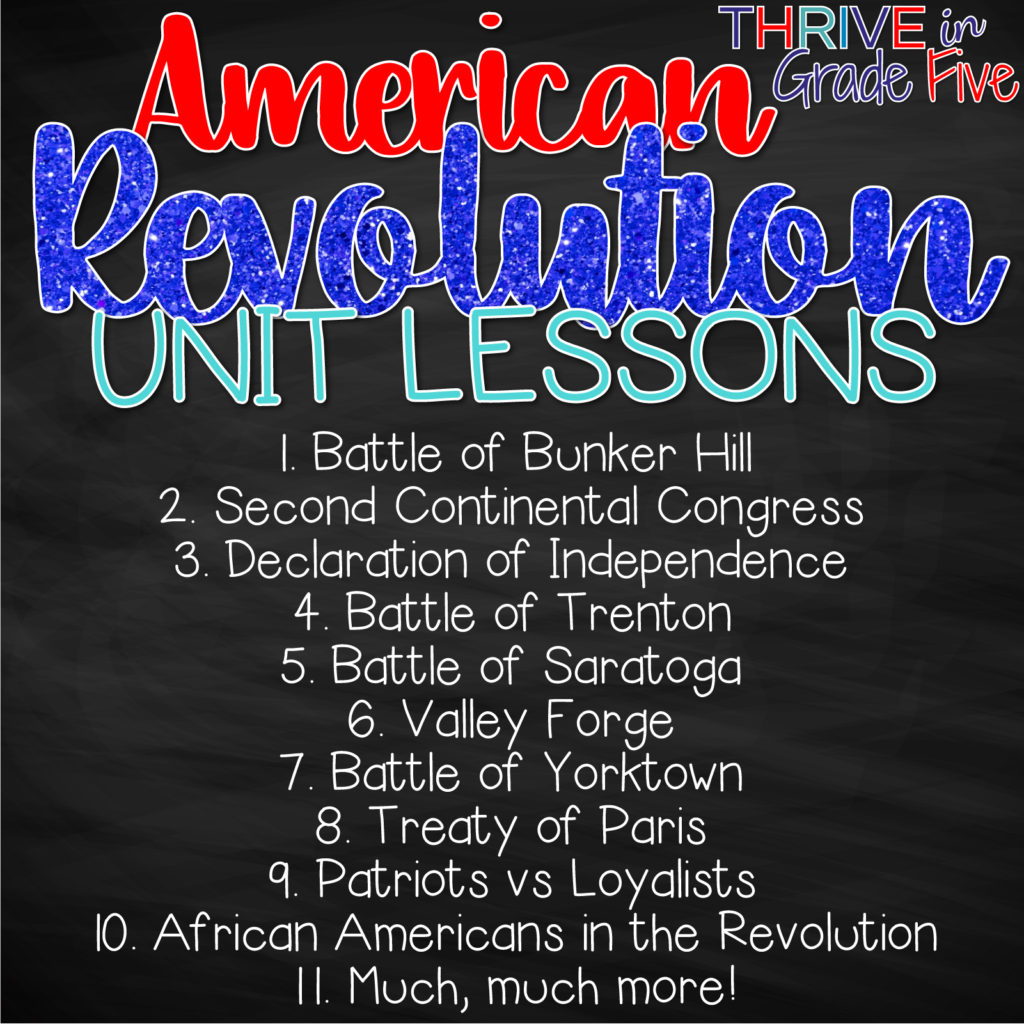
I follow a format similar to the steps listed above. However, in this section, I like to sprinkle in some extra resources that aid in making the American Revolution interesting and relevant for my students.
Battle of Bunker Hill
I love telling the story of the ragtag colonists building up earthworks and the British charging up the hill in their bright red uniforms. Students are fascinated to learn that the colonists lost this battle due to their lack of ammunition.
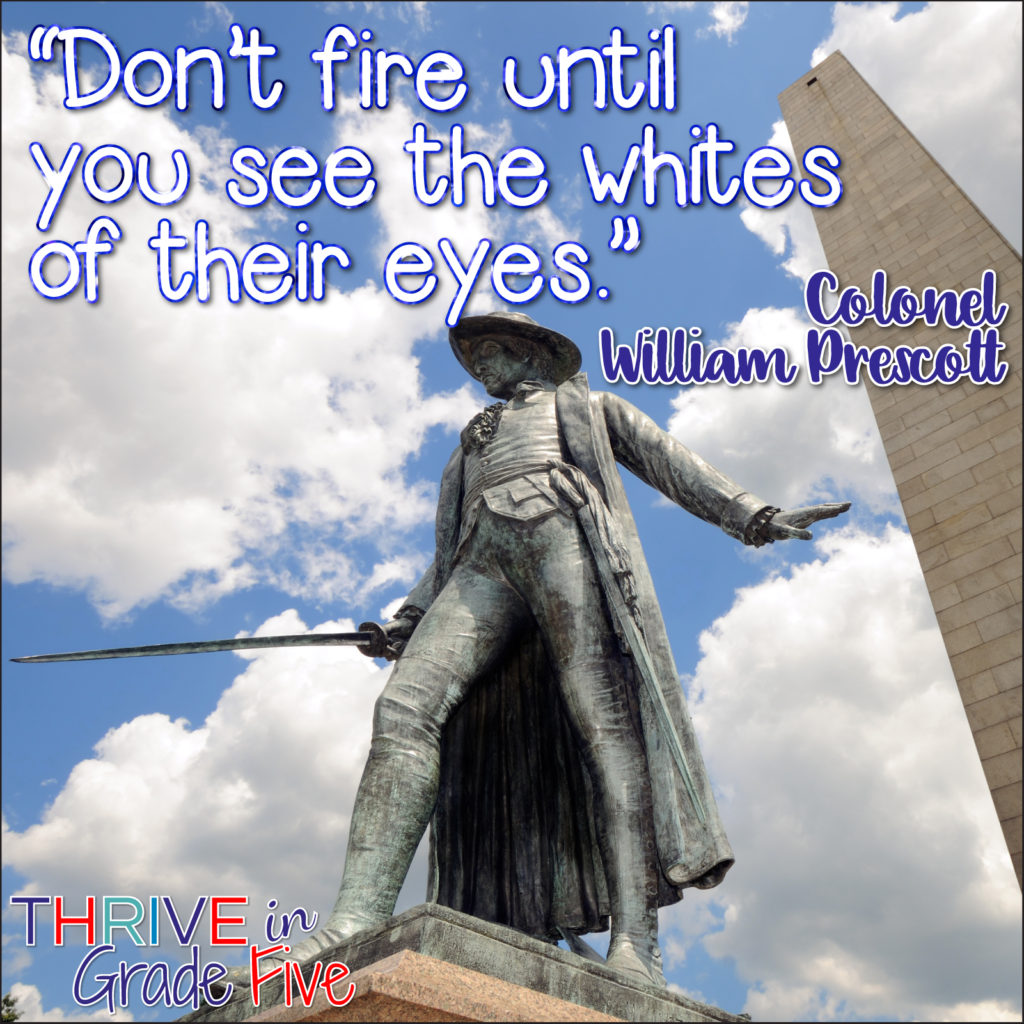
Students enjoy examining the primary source print of Dr. Joseph Warren, the young physician killed during this battle.
After I teach the Battle of Bunker Hill lesson, I start using the Liberty’s Kids video series to reinforce the events of the American Revolution. I really have to give kudos to the makers of the series, they did an amazing job!
Second Continental Congress & Declaration of Independence
What students need to understand about the Second Continental Congress is that they really did try to reconcile with England. Once their petition was ignored, there was no choice but to declare independence.
Many students think that signing the Declaration of Independence was a glamorous, fun event. It definitely wasn’t!
This was a somber time because the men who signed this document knew they were committing treason against the king. They were essentially signing their death warrants if the Revolution was lost.
Because I have teacher-to-teacher intuition, I know that you want more information on teaching about this amazing but controversial document.
I have a wealth of great information, resources, and my favorite social studies YouTube video EVER linked in this blog post: Teach the Declaration of Independence the Fun Way!
Battles of Trenton and Saratoga
I tell the stories of these battles before we dive into our informational passages and foldable activities.
This section of the unit includes the famous painting of George Washington crossing the Delaware to surprise the sleeping force of Hessians. (You know, the one where he’s standing up in the boat and not at all worried about the blowing ice and the possibility of capsizing the boat into the frigid water!) We spend some time dissecting this SECONDARY source and discussing the things in the painting that are incorrect.
Valley Forge
Ahhh, Valley Forge… I feel cold and uncomfortable just thinking about the miserable conditions that the Continental soldiers endured at their winter encampment.
I like to dim the classroom lights, ask students to close their eyes and imagine the scene as I describe it. We talk about why many of the soldiers had red footprints, what it was like to not have enough food and shelter, and how bone-chilling cold it was.
We watch Dear America: The Winter of Red Snow. This video is absolutely incredible and clearly shows the struggle of the soldiers at Valley Forge. Students adore this video and always ask to see it again. Unfortunately, I can’t really point you to a place to get this video. It’s only on VHS but maybe if we all write letters/emails to Scholastic, they’ll put it on DVD. *Wink* I think they’re tired of hearing from me!
We examine a primary source letter from George Washington asking, actually begging, his governor friend for help for his men. Students need to remember that the Continental Congress had very little money or supplies and couldn’t pay for the army.
Battle of Yorktown and Treaty of Paris
The French and the Americans devised a genius strategy to surround the British and assure Cornwallis’ surrender. While studying this battle, we dissect two primary source quotes, one by General Washington and one by Lord Cornwallis.
George Washington: “I have the honor to inform Congress, that a reduction of the British Army under the command of Lord Cornwallis, is most happily effected.” October 19, 1781
Lord Cornwallis: “I have the mortification to inform your Excellency that I have been forced to give up the posts of York and Gloucester and to surrender the troops under my command, by capitulation … as prisoners of war to the combined forces of America and France.” October 20, 1781
African Americans in the Revolution
It’s necessary to study the people and groups who were essential to the Revolutionary efforts. Unfortunately, there is little mention of African Americans during the Revolutionary period in most history textbooks.
Enslaved Africans may or may not have been willing participants in the war. Many thousands of enslaved individuals were offered freedom for their service in the Revolution by both sides. Only a fraction of the enslaved individuals who accepted this offer and fought were actually freed.
The sad, painful truth is that slavery existed and was thriving during the Revolutionary period. If you need help talking about 18th Century slavery in your classroom, please see this post: How to Teach 18th Century Slavery in Today’s Classroom.
Women in the Revolution
History often overlooks the sacrifices and contributions of women. The women of the Revolution were wives taking care of farms and shops while husbands were away, female camp followers doing vital jobs for soldiers, and a few very special women were even spies.
I love reading this book (below) to my students because there are a plethora of stories about women and their contributions, both large and small, to the war effort.
Important Individuals
Learning about the struggles, successes, and lives of individuals makes history so much more relevant to students. I created short biographies and foldable activities for the following historical figures/groups:
George Washington, Paul Revere, Mercy Otis Warren, Phyllis Whealey, Patrick Henry, Samuel Adams, John Adams, Abigail Adams, Ben Franklin, Thomas Jefferson, Marquis de Lafayette, Sons of Liberty, Daughters of Liberty
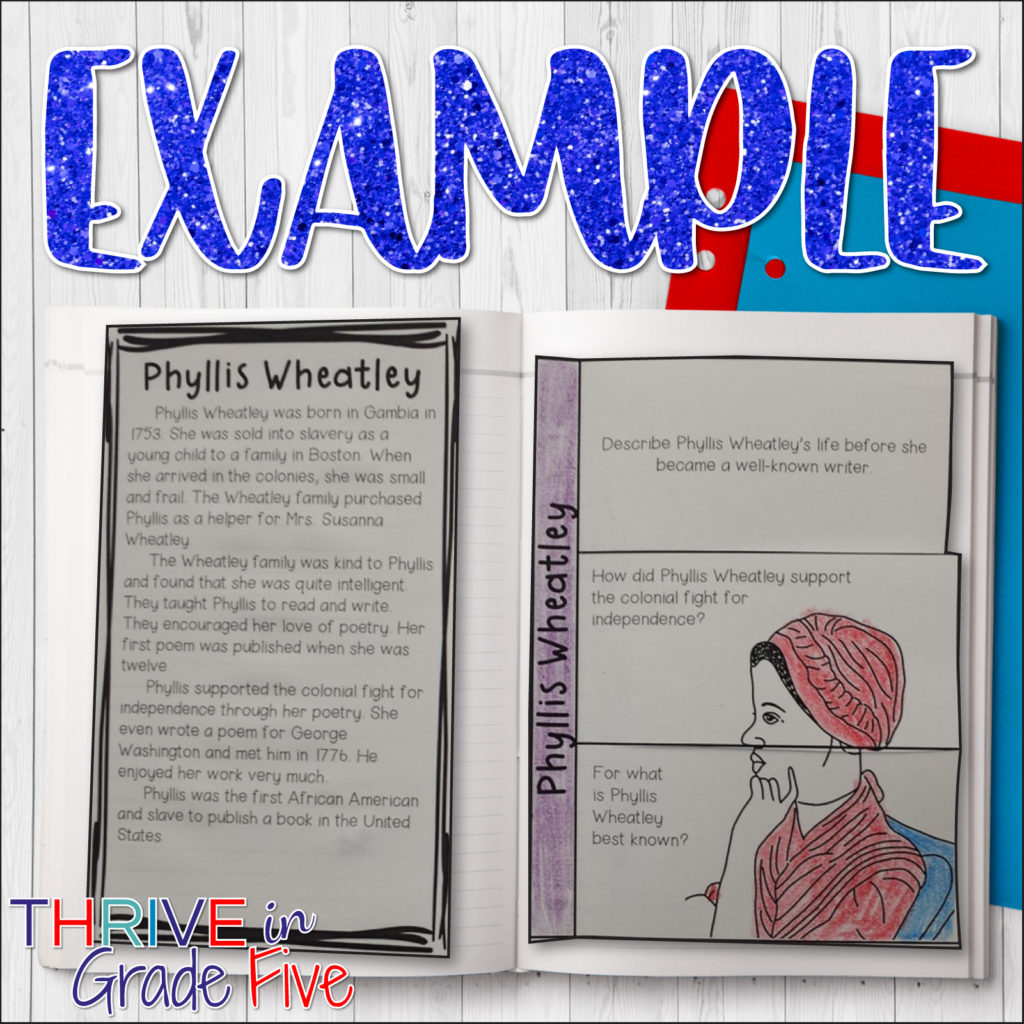
American Revolution Spies
If you’re looking to build interest and engagement while teaching the American Revolution, introduce stories of spying during this period. My students are fascinated with Revolutionary-Era spies. Be sure to teach your students about Benedict Arnold, Nathan Hale, and the Culper Spy Ring. Show students code letters and mask letters. Maybe even try your hand at invisible ink!
Throw in Some American Revolution STEM!
I have to tell you about this resource because I love it so much! Every year, I read this book to students:
Then, we use our stellar STEM skills to build clotheslines just like in the book.
Here’s some extra fun stuff your students will love:
This adorable music video has a surprise ending: Soldier, Soldier Will You Marry Me?
School House Rock: I really just recommend that you buy the entire series. It’s super cheap on Amazon and it covers social studies content from early settlement through government.
Music Video: Rich Lady Over the Sea The mother is England and the daughter is the colonies. We could spend forever talking about the intricacies of the relationship between England and the colonies portrayed in this video.
Scholastic’s Virtual Field Trip to the American Revolution Museum in Philadelphia – Free & Fascinating!
If you’re looking for a print ‘n go comprehensive bundle for teaching the American Revolution, this is what you need…
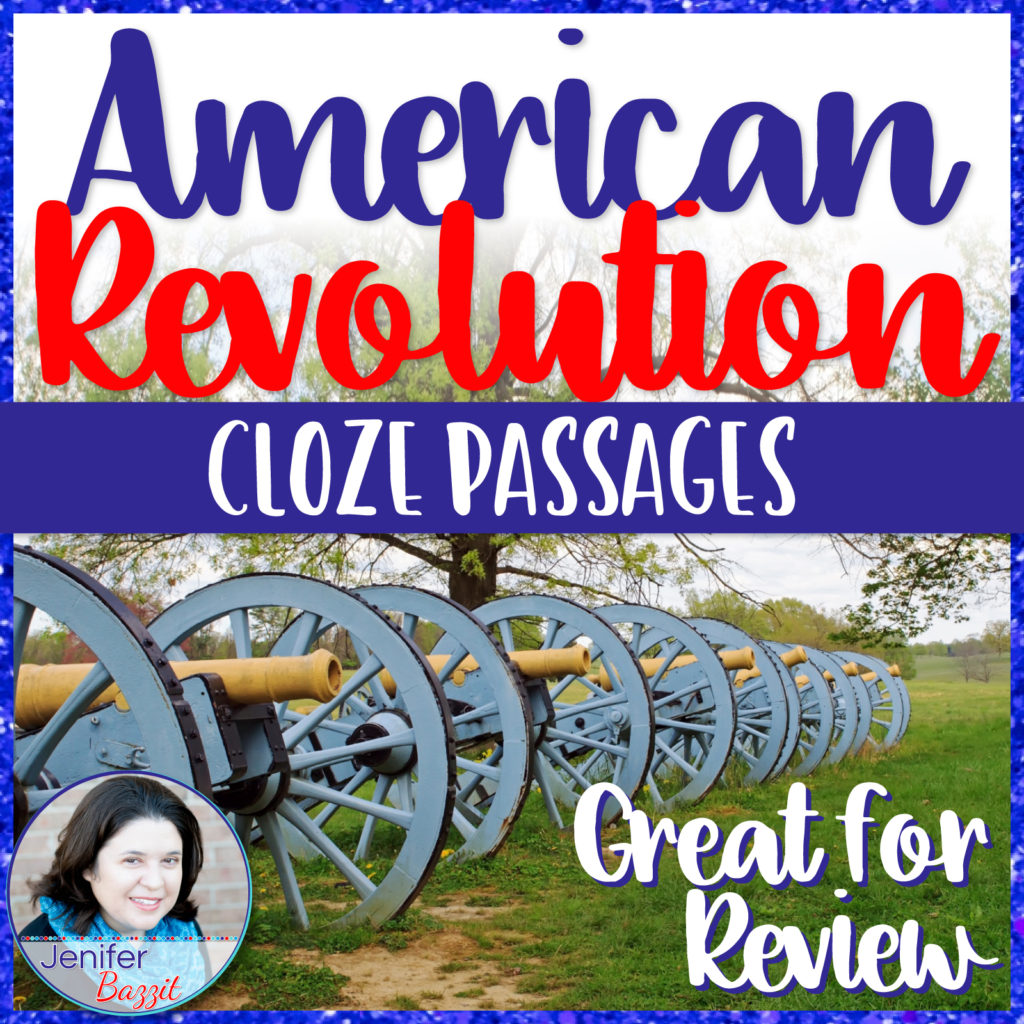
Would you like a set of American Revolution Cloze Passages sent to you for free? Enter your first name and email address below to receive this freebie right away!
To keep this blog post for later, simply pin this image to your teacher Pinterest board!

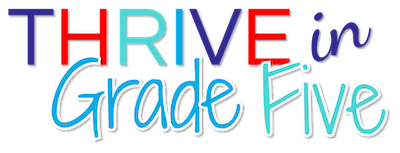
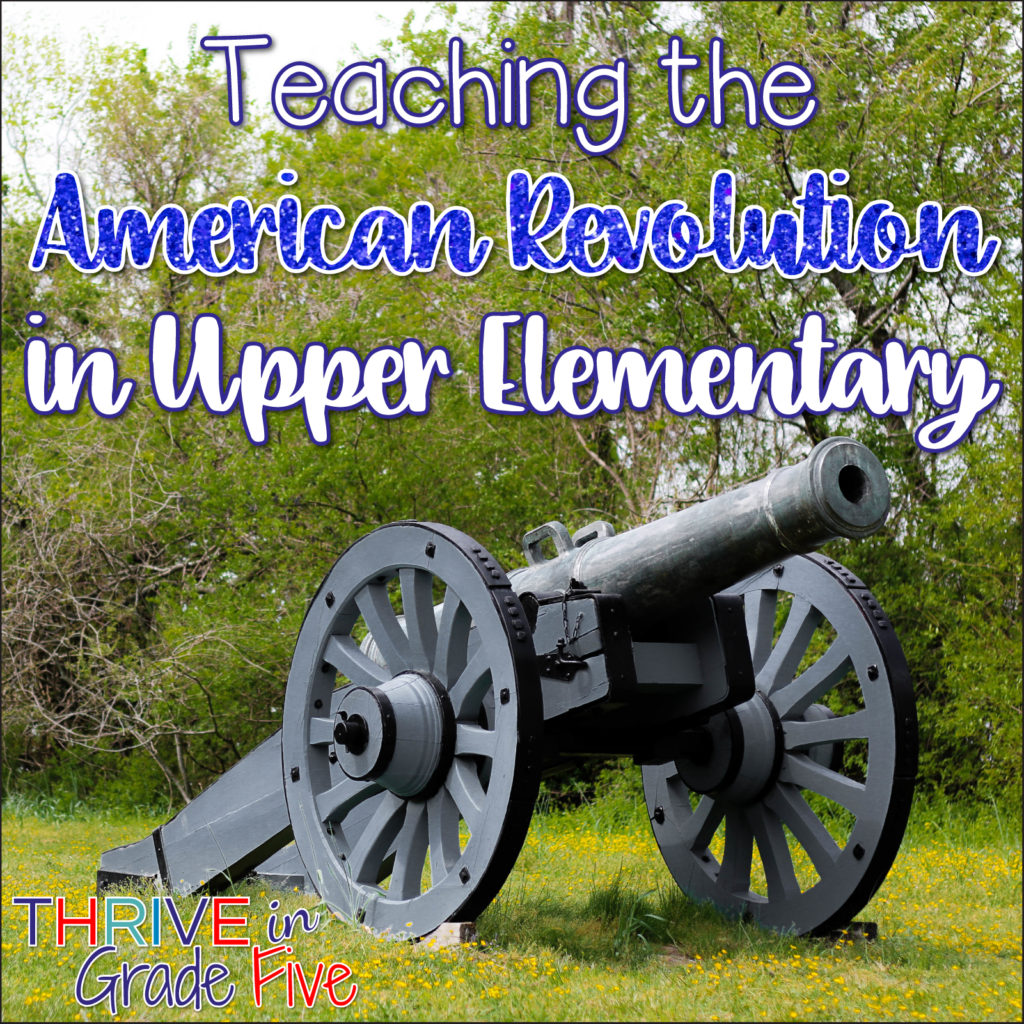
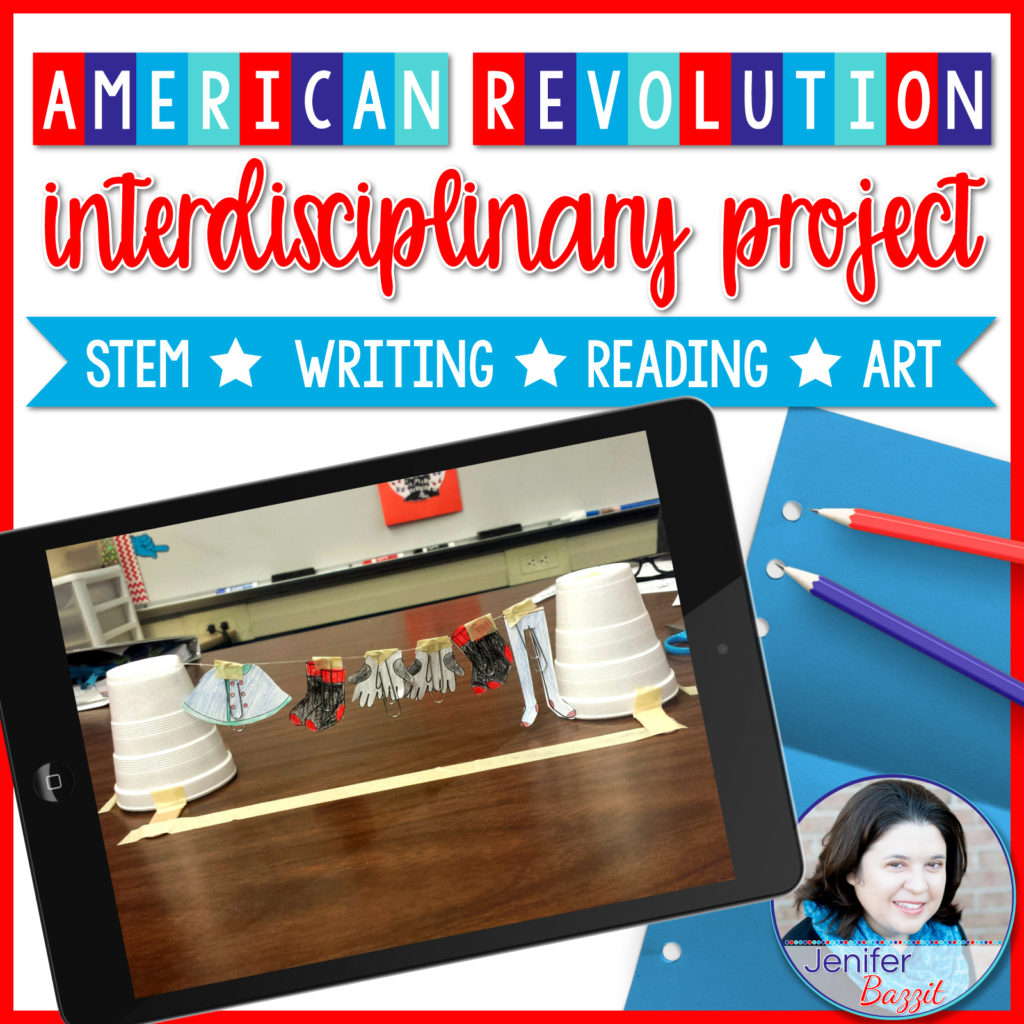
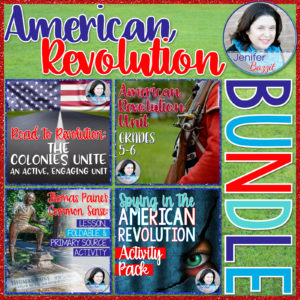
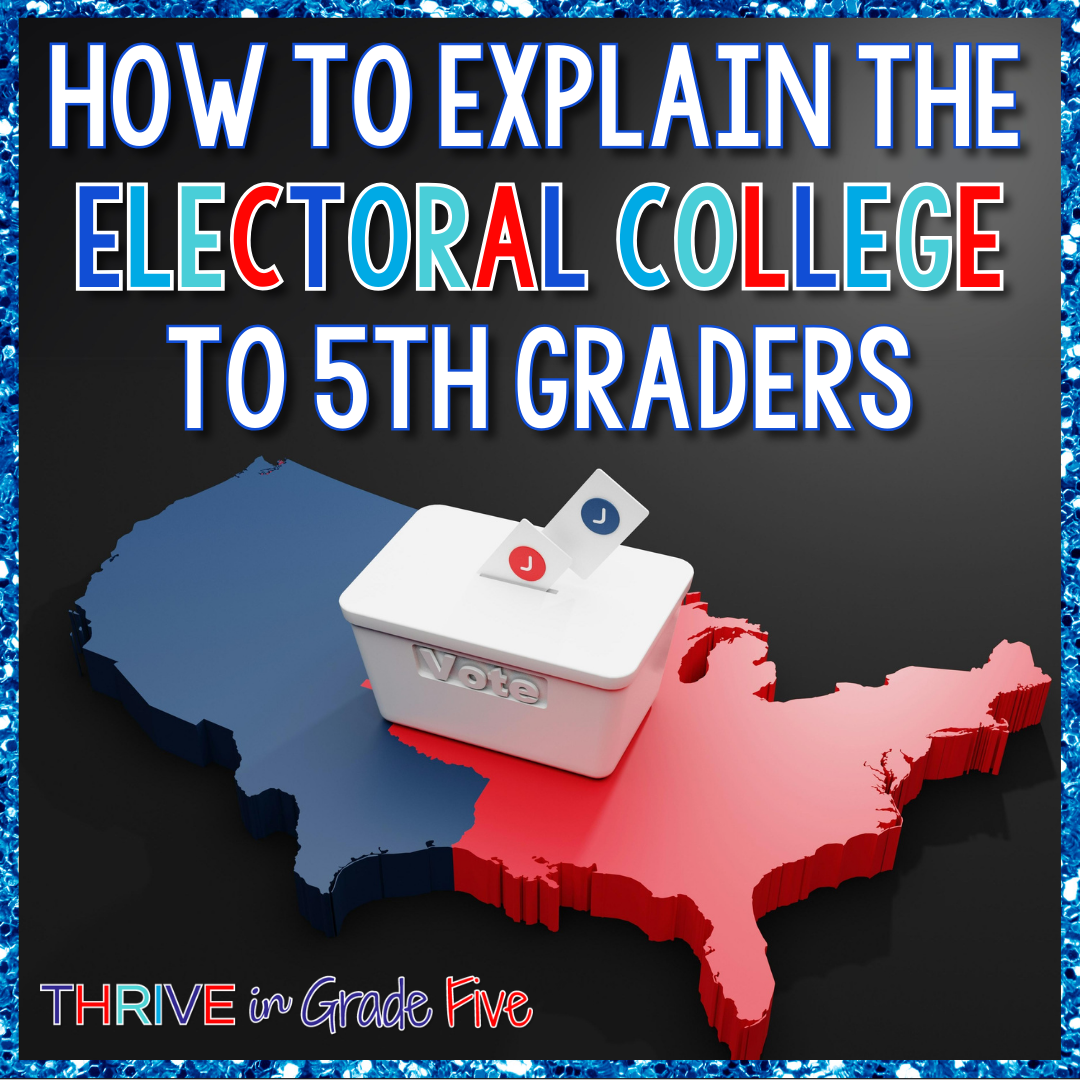


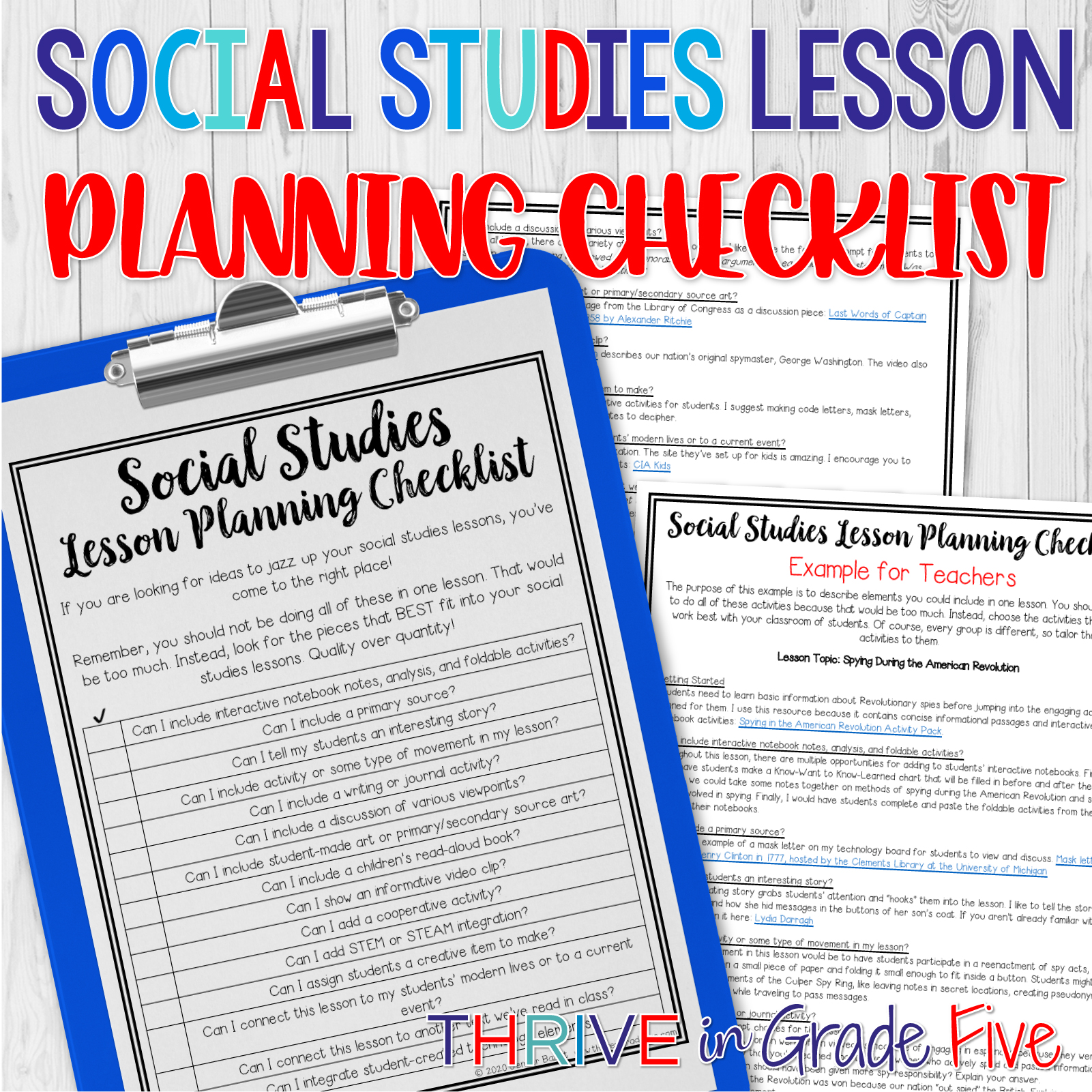
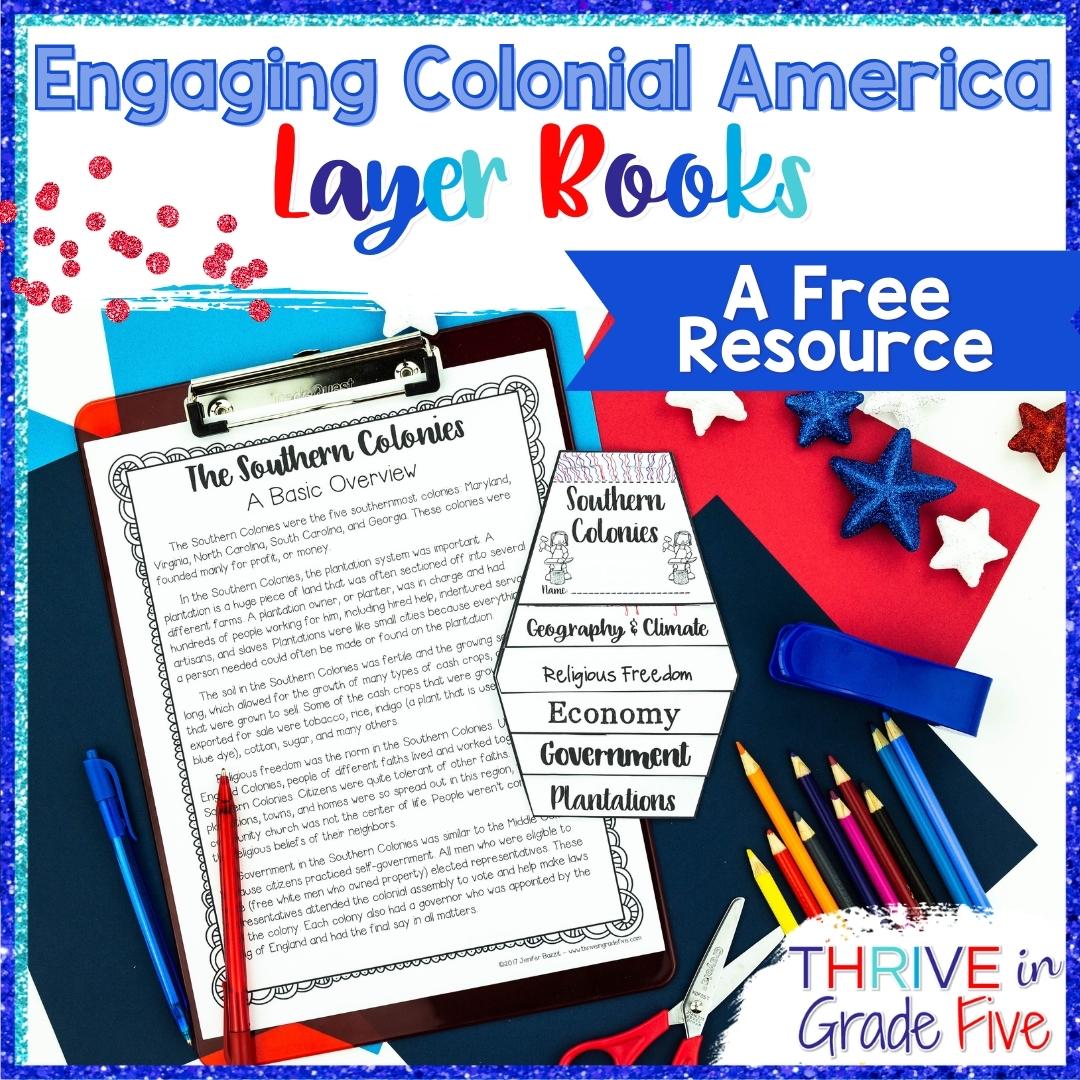

16 Comments
I am so interested in your interactive notebook?
Hi Jessica! I love interactive notebooks and I use them almost daily with my students.
You might check out this resource. It contains lessons and activities (lots of them are foldables).
https://www.teacherspayteachers.com/Product/Road-to-Revolution-The-Colonies-Unite-An-Active-Engaging-Unit-1623235
Thanks for reaching out to me!
Where can I find the foldable used for the Sugar Act?
Hi Erin! The foldable for the Sugar Act is contained in this Road to Revolution resource!
https://www.teacherspayteachers.com/Product/Road-to-Revolution-The-Colonies-Unite-An-Active-Engaging-Unit-1623235
Thanks for reaching out to me!
How long does it typically take to get through the unit? I have 45 minutes daily to teach social studies.
Hi Julie! It takes me around 3 weeks to get through my American Revolution Unit! We have similar class periods. I hope this helps 🙂
I absolutely love using the Road to the Revolution resource each year. This resource gives a thorough understanding of the causes of the Revolutionary War. My students are engaged in the lessons and the hands on resources keep them engaged. Thanks for this favorite!
You are very welcome, Julie! I loooove teaching the Road to Revolution. It’s just so exciting!
You can purchase Dear America season 1 on Amazon Prime. I show “Winter of Red Snow”, but I also show “Journey to America” when we talk about Plymouth. It was worth it to me to buy the whole season.
That’s awesome, Holly! I’m going to go look at Amazon prime right now 🙂
I cannot wait to teach this now that I have your resources from TPT. Thank you. I’ve been looking to find the story that you tell to get the kids hooked before you start the Road to the Revolution section. Could I read a book or is it more important to use more of a story telling approach. If it’s the latter, I wold need some kind of idea of what story to tell. Is this available on TPT or through your blog?
Hi Stacy! I would recommend telling a story before you start each event from the Road to Revolution. It can be as simple as introducing each event in an exciting way. Your students can definitely tell when you are interested in the history topic 🙂
I can’t find the printable Lesson 10: The First Continental Congress. Where is it??
Hi Lola! That lesson is contained in this resource on TPT: https://www.teacherspayteachers.com/Product/Road-to-Revolution-The-Colonies-Unite-An-Active-Engaging-Unit-1623235
Please let me know if you have any other questions 🙂
Do you have a link to Important Individuals foldable?
Learning about the struggles, successes, and lives of individuals makes history so much more relevant to students. I created short biographies and foldable activities for the following historical figures/groups:
George Washington, Paul Revere, Mercy Otis Warren, Phyllis Whealey, Patrick Henry, Samuel Adams, John Adams, Abigail Adams, Ben Franklin, Thomas Jefferson, Marquis de Lafayette, Sons of Liberty, Daughters of Liberty
Hi Anita! Great question! Those foldables are located in my American Revolution Unit: https://www.teacherspayteachers.com/Product/American-Revolution-Unit-2140253